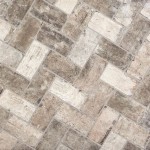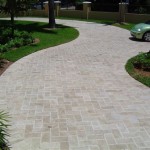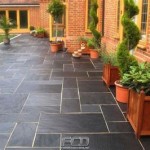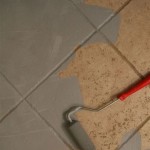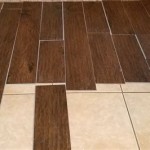Bringing A Fresh Look To Your Bathroom With Wall Tiles
The bathroom, often a smaller space within a home, holds significant importance for daily routines and personal well-being. Its design and functionality can profoundly impact the overall feeling of a home. While various elements contribute to a bathroom's aesthetic, wall tiles are a particularly impactful choice. Utilizing wall tiles in the bathroom offers a versatile and practical approach to enhancing its visual appeal, durability, and hygiene. The selection of appropriate wall tiles is crucial in achieving the desired ambience and long-term performance.
Wall tiles in the bathroom are available in a wide range of materials, colors, sizes, and textures, allowing for extensive design flexibility. They can be used to create a variety of looks, from minimalist and modern to traditional and ornate. Beyond aesthetics, wall tiles provide a durable and water-resistant surface, protecting the underlying walls from moisture damage, a common concern in bathrooms. The non-porous nature of most tile materials also makes them easy to clean and maintain, resisting stains, mold, and mildew growth. This combination of aesthetic appeal and practical benefits makes wall tiles a popular choice for bathroom renovations and new construction projects.
Enhancing Aesthetics and Creating Visual Impact
The aesthetic impact of wall tiles is one of their primary draws. With a vast array of styles available, homeowners and designers can tailor the bathroom's appearance to reflect their personal tastes and preferences. The choice of color, pattern, and texture can significantly influence the overall mood and ambiance of the space.
Color plays a pivotal role in setting the tone of a bathroom. Lighter colors, such as whites, creams, and pastels, can create a sense of spaciousness and airiness, making a small bathroom feel larger and more open. These colors also reflect light well, brightening the room and reducing the need for artificial lighting. Darker colors, on the other hand, can add drama and sophistication to a bathroom, creating a more intimate and luxurious feel. However, it is important to use darker colors judiciously, particularly in smaller bathrooms, as they can make the space feel smaller and more enclosed.
Patterns and textures can add visual interest and depth to bathroom walls. Geometric patterns, such as chevrons, hexagons, or mosaics, can create a modern and dynamic look. Natural stone textures, such as marble, granite, or slate, can bring a touch of elegance and sophistication to the space. Textured tiles can also add a tactile element to the bathroom, enhancing the overall sensory experience. Subway tiles, a classic choice, offer a clean and timeless look that complements a variety of design styles.
Beyond full wall coverage, tiles can be used strategically to create focal points within the bathroom. A decorative tile backsplash behind the sink or a tiled accent wall in the shower can add visual interest and break up the monotony of plain walls. These focal points can be used to highlight architectural features or to introduce a splash of color or pattern. The strategic placement of tiles can effectively draw the eye and create a more visually appealing and engaging bathroom space.
The size of the tiles also contributes to the overall aesthetic. Larger tiles, with fewer grout lines, can create a more seamless and modern look. Smaller tiles, on the other hand, can add detail and texture, particularly when used in intricate patterns or mosaics. The choice of tile size should be carefully considered in relation to the size of the bathroom and the desired aesthetic. Using large tiles in a small bathroom can sometimes make the space feel even smaller, while using small tiles in a large bathroom can create a busy and overwhelming effect.
Durability, Water Resistance, and Maintenance
Beyond aesthetics, the practical benefits of wall tiles are equally important. Bathrooms are inherently humid environments, making water resistance a crucial factor in material selection. Wall tiles provide a durable and water-resistant barrier that protects the underlying walls from moisture damage, preventing the growth of mold and mildew. This is particularly important in areas that are frequently exposed to water, such as shower walls and around the bathtub.
The durability of wall tiles also contributes to their long-term value. High-quality tiles are resistant to scratches, chips, and stains, maintaining their appearance for many years with proper care. This makes them a cost-effective choice in the long run, as they require less frequent replacement compared to other wall coverings. The initial investment in quality tiles is often offset by their extended lifespan and reduced maintenance requirements.
The non-porous nature of most tile materials makes them easy to clean and maintain. Unlike painted walls or wallpaper, tiles are resistant to stains and can be easily wiped clean with a damp cloth or mild detergent. This makes them a hygienic choice for bathrooms, where cleanliness is paramount. The smooth, non-porous surface prevents the absorption of dirt, grime, and bacteria, making it easier to maintain a clean and healthy bathroom environment.
Grout, the material used to fill the gaps between tiles, is also an important consideration in terms of maintenance. While grout can be susceptible to staining and discoloration, particularly in high-moisture areas, there are several strategies to mitigate this issue. Using epoxy grout, which is non-porous and highly resistant to stains, is one option. Sealing grout regularly with a grout sealer can also help to protect it from moisture and stains. Regular cleaning with a grout cleaner can help to remove any dirt or grime that accumulates over time.
The choice of tile material also affects its durability and maintenance requirements. Ceramic and porcelain tiles are popular choices for bathrooms due to their durability, water resistance, and ease of maintenance. Natural stone tiles, such as marble and granite, are more porous and require more frequent sealing to protect them from stains and moisture damage. Glass tiles are non-porous and easy to clean, but they can be more susceptible to scratches and chips. The selection of tile material should be based on a careful consideration of its durability, water resistance, maintenance requirements, and aesthetic appeal.
Exploring Different Tile Materials and Installation Considerations
The market offers an extensive selection of tile materials, each with unique characteristics, advantages, and disadvantages. Understanding these differences is crucial for making an informed decision that aligns with the bathroom's design, budget, and performance requirements.
Ceramic tiles are a cost-effective and versatile option, known for their durability and ease of maintenance. They are available in a wide range of colors, patterns, and sizes, making them suitable for various design styles. Ceramic tiles are less dense than porcelain tiles, making them easier to cut and install. They are a good choice for wall tiles, as they are not as susceptible to cracking or chipping as some other materials.
Porcelain tiles are denser and more durable than ceramic tiles, making them a better choice for high-traffic areas or areas that are exposed to more moisture. They are also more resistant to scratches and stains. Porcelain tiles are available in a wide range of finishes, including matte, gloss, and textured finishes. They are a popular choice for both wall and floor tiles in bathrooms.
Natural stone tiles, such as marble, granite, and slate, offer a luxurious and elegant look. Each tile is unique in its veining and coloration, adding a sense of natural beauty to the bathroom. However, natural stone tiles are more porous than ceramic and porcelain tiles and require regular sealing to protect them from stains and moisture damage. They are also more expensive than other tile materials.
Glass tiles offer a sleek and modern look and are available in a wide range of colors and finishes. They are non-porous and easy to clean, making them a hygienic choice for bathrooms. Glass tiles can be used to create stunning mosaics or accent walls. However, they can be more susceptible to scratches and chips than other tile materials.
Beyond the choice of material, proper installation is critical for the long-term performance and aesthetic appeal of wall tiles. The substrate, or the surface on which the tiles are installed, must be clean, level, and structurally sound. Any imperfections in the substrate can affect the appearance and durability of the tiles. Proper waterproofing is also essential, particularly in shower areas, to prevent moisture damage to the underlying walls. A professional tile installer will have the expertise and experience to ensure that the tiles are installed correctly, creating a seamless and durable finish.
The choice of grout color can also significantly impact the overall look of the tiled walls. Matching the grout color to the tile color can create a seamless and uniform look, while using a contrasting grout color can highlight the shape and pattern of the tiles. The grout width should also be carefully considered, as wider grout lines can create a more rustic or traditional look, while narrower grout lines can create a more modern and sleek look.
Finally, consider the lighting in the bathroom when choosing wall tiles. The way light reflects off the tiles can significantly affect their appearance. Glossy tiles will reflect more light, making the bathroom feel brighter and more spacious. Matte tiles will absorb more light, creating a more subdued and intimate atmosphere. The lighting should be carefully considered to enhance the beauty and functionality of the wall tiles.

Types Of Tiles 10 Diffe For Kitchens And Bathrooms

15 Creative Ways To Lay Subway Tiles In Bathroom Kitchen

Bathroom Wall Tiles Design Ideas Designcafe

5 Trends You Need To Know About The Wall Tiles

Ceramic Glass Or Stone 15 Bathroom Wall Tile Ideas Sweeten Com

6 Splendid Wall Tiles Design That Can Give A New Look To Your Kitchen

19 Tricks To Make A Small Bathroom Look Bigger First Choice Warehouse

How Subway Wall Tiles Create Timeless Style In Kitchens And Bathrooms Face Impex

Bathroom Tiles Stylish Trends For Singapore Homes

Popular Bathroom Tile Trends Ideas For 2025 Oasis
Related Posts


